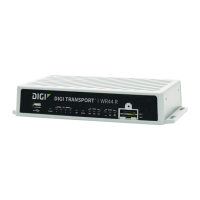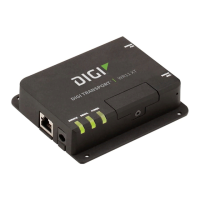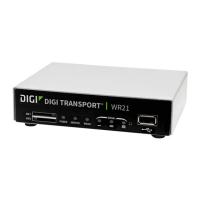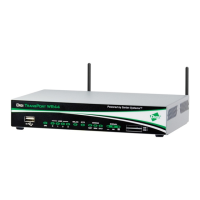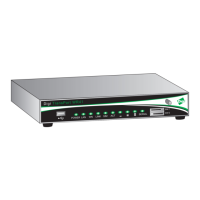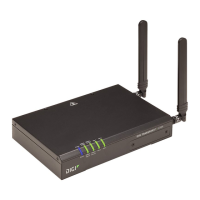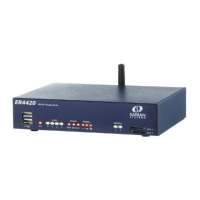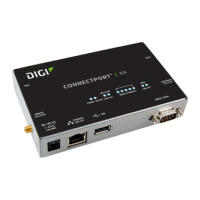AT commands
Digi TransPort User Guide 117
The AT command interface
The AT command prefix is used for those commands that are common to modems. To configure
the router using AT commands, you must first connect it to a suitable asynchronous terminal.
1. You will first need to set the interface speed/data format for your terminal to 115,200bps, 8
data bits, no parity and 1 stop bit (these settings can be changed later if necessary).
2. When your terminal is correctly configured, apply power and wait for the B2 indicator to stop
flashing.
The device is now ready to respond to commands from an attached terminal and is in
command mode. Alternatively, you can configure the router to automatically connect to a
remote system on powerup,
3. Type AT (in upper or lower case), and press [Enter]. The router should respond with the
message OK. This message is issued after successful completion of each command. If an
invalid command is entered, the router will respond with the message ERROR.
If there is no response, check that the serial cable is properly connected and that your
terminal or PC communications software is correctly configured before trying again.
If you have local command echo enabled on your terminal, you may see the AT command
displayed as AATT. If this happens, use the ATE0 command (which will appear as AATTEE00),
to prevent the router from providing command echo. After this command has been entered,
further commands will be displayed without the echo.
AT commands are case-insensitive
The AT command prefix and the commands that follow it can be entered in upper or lower case.
Entering multiple commands
After the prefix, you can enter one or more commands on the same line of up to 40 characters.
When the line is entered, the router will execute each command in turn.
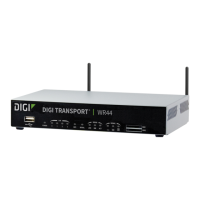
